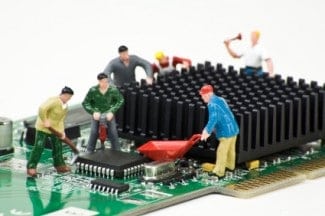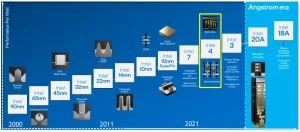Introduction
In today’s technologically advanced world, the intricate devices we rely on, from smartphones to autonomous vehicles, are powered by tiny marvels known as semiconductors.
These minuscule chips are the backbone of modern electronics, enabling rapid data processing and intricate computations. However, the journey from conceptualizing a chip to its physical realization involves a complex web of companies, technologies, and models.
In this article, we’ll delve into the three broad models of semiconductor production: Integrated Device Manufacturers (IDM), Fabless-Foundry, and Fab-Lite.
We’ll explore how these models shape the industry and their role in meeting the insatiable demand for smaller, faster, and more powerful chips.
Integrated Device Manufacturers (IDM)
The IDM model represents a holistic approach to semiconductor manufacturing. In this model, a single company controls all phases of production, from research and development (R&D) to chip fabrication and packaging.
This vertical integration allows for streamlined communication between teams, resulting in greater efficiency and faster time-to-market.
Examples of IDM companies include Intel, Samsung, and Texas Instruments.
Pros:
- Tight integration facilitates quicker problem-solving and decision-making.
- Greater control over the entire manufacturing process enhances quality assurance.
Cons:
- Enormous upfront investments required for R&D, fabrication facilities, and equipment.
- Limited specialization in each production phase compared to focused companies.
Fabless-Foundry Model
The dominant model in today’s semiconductor landscape is the fabless-foundry approach. Fabless firms specialize in chip design, conceptualizing intricate architectures to cater to specific applications like gaming or data processing.
Foundries, on the other hand, specialize in fabrication, using cutting-edge technology to create chips based on designs from fabless firms.
The collaboration between these two entities is essential to bridge the gap between innovation and physical realization.
In this model, fabless companies focus on chip design, while foundries specialize in chip fabrication.
- Fabless Companies:
- NVIDIA: Known for its graphics processing units (GPUs) used in gaming and AI applications, NVIDIA focuses on designing high-performance chips optimized for specific tasks.
- AMD (Advanced Micro Devices): Another major player in the graphics and computing space, AMD designs chips for gaming, data centers, and other applications.
- Foundries:
- TSMC (Taiwan Semiconductor Manufacturing Company): TSMC is one of the world’s largest and most advanced foundries. They collaborate with various fabless companies to fabricate cutting-edge chips using advanced process nodes.
- GlobalFoundries: A leading semiconductor foundry that offers advanced manufacturing technologies for various industries.
Pros:
- Fabless firms can focus solely on design without the overhead of manufacturing.
- Foundries optimize fabrication processes, enhancing efficiency and scale.
Cons:
- Dependence on external foundries can result in supply chain vulnerabilities.
- Communication challenges between geographically dispersed entities can lead to delays.
Read more: How Dennard Scaling with Moore’s Law Revolutionised Modern World
Fab-Lite Model
The fab-lite model strikes a balance between vertical integration and specialization. Fabless companies with fab-lite operations maintain a smaller-scale fabrication unit, often for specialized cases like automotive or defense applications. These in-house foundries cater to lower-technology nodes, ensuring a degree of independence while still leveraging external foundries for advanced technologies.
Fabless Companies with Fab-Lite Operations:
- Qualcomm: Known for its mobile processors, Qualcomm has some in-house chip fabrication capabilities to support its wireless and mobile technology products.
- Apple: While primarily a fabless company, Apple has been reported to have explored in-house chip manufacturing capabilities for specific applications.
Pros:
- Reduces the risks associated with complete dependence on external foundries.
- Allows for customization of chip production for specific applications.
Cons:
- Striking the right balance between in-house and external production can be challenging.
- May require expertise in both chip design and fabrication.
Semiconductors in Automotive and Defense
The automotive and defense sectors, traditionally reliant on legacy chips, are undergoing significant transformations.
While these industries may acquire older fabs or establish in-house facilities for specific applications, they are competing for resources with cloud computing providers and mobile companies.
This competition for limited foundry resources can impact chip availability, as was evident in the recent global car shortage resulting from supply chain issues.
Automotive and Defense Sector:
- Infineon: This German semiconductor company supplies chips to the automotive and industrial sectors. Infineon has in-house manufacturing facilities for certain specialized automotive chips.
- Renesas Electronics: Renesas provides semiconductor solutions for the automotive sector. They maintain their own fabrication facilities to cater to the stringent quality and customization requirements of the automotive industry.
Conclusion
The semiconductor industry’s evolution is driven by the interplay between IDM, fabless-foundry, and fab-lite models.
As demand for smaller, faster, and more efficient chips continues to surge, companies must strategically position themselves within these models to ensure success.
Collaboration, specialization, and adaptability will be key factors in navigating the intricate landscape of semiconductor manufacturing, ultimately shaping the technological innovations that define our future.




